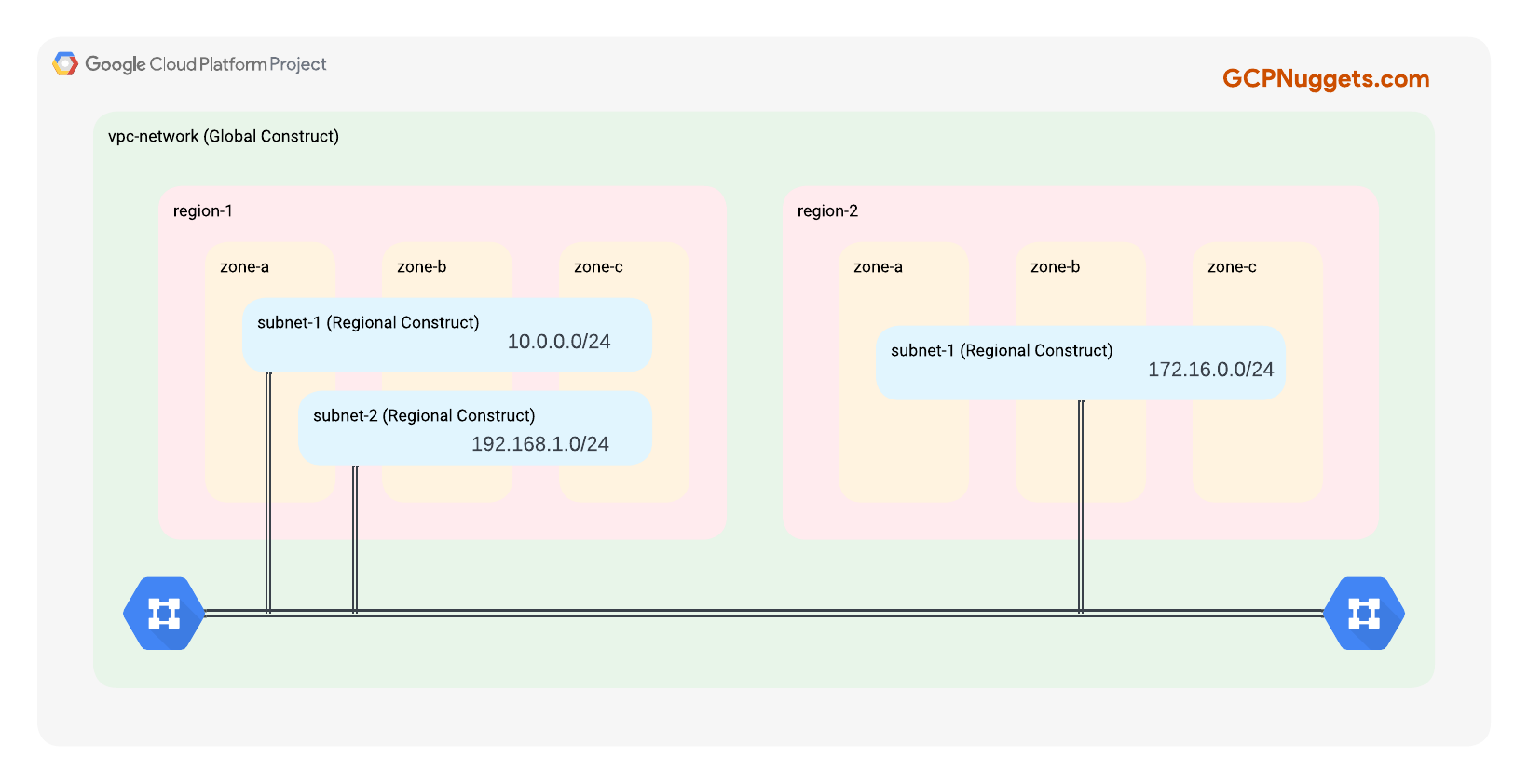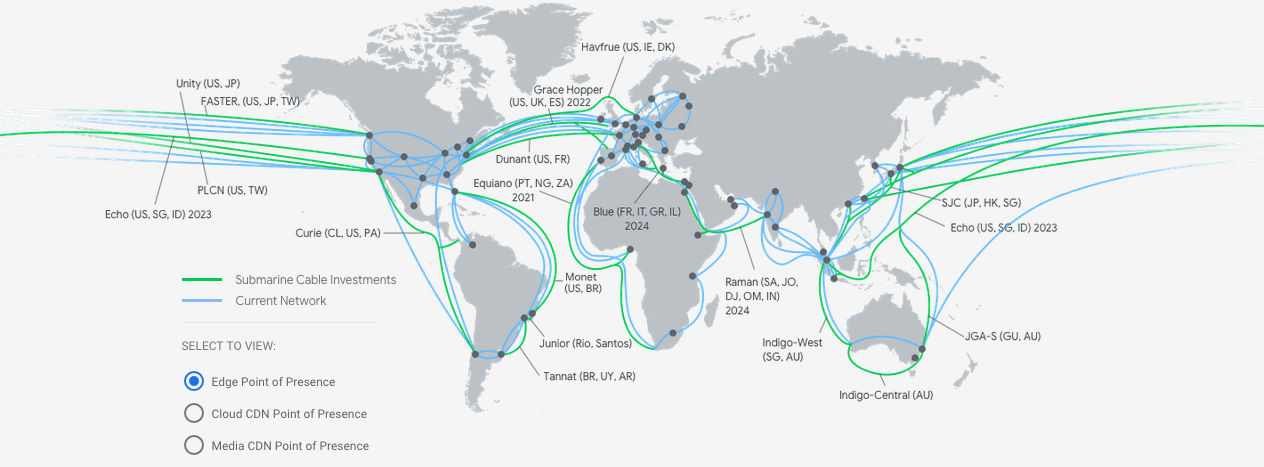The concept of Global VPCs in GCP
This articles discusses the global nature of VPCs in GCP and how it differs with other cloud service providers.
If you are from a traditional data center background, the concept of Virtual Private Clouds and their Global nature in GCP can be quite confusing. This is complicated by the fact that many other cloud service providers didn't have the concept of Global VPCs until recently (some don't have this concept even today).
In a nutshell, imagine you have a vast network with points of presence (POPs) across different regions in the world, all interconnected with one another. You just have subnets within these regions and the entire network is flat. Your resources in one region can reach resources in the opposite side of the world without any special configuration or devices required. That's exactly how GCP's VPCs operate.

You can have subnets in as many GCP regions as you like and as long as they are in the same VPC, they are all connected and resources within them can talk to one another. In a more traditional world, if you have subnets in various geographic regions, you need some way to connect them. This could be through direct point-to-point links using dark fiber or MPLS or maybe even VPNs. In the GCP world, this backbone connectivity is provided by the platform itself. The packets from a subnet in one region get to the subnet in another region by riding Google's dense web of underground, terrestrial and sub-sea cables.

The beauty of this solution is that it removes operational complexity of trying to get resources in one region talk to resources in other regions. It just happens auto-magically. You no longer need VPN tunnels between regions to achieve this. This also means the bottlenecks introduced by VPN tunnels is also no longer a concern and this global VPC construct has virtually no limits on performance and offers the best latency between regions. Isn't that cool?
